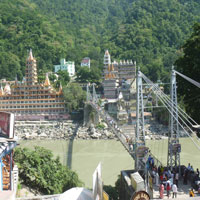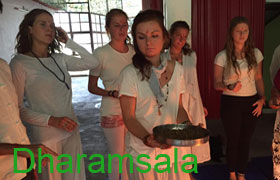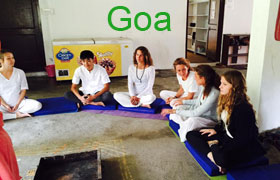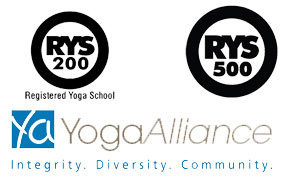Yoga Teacher Training in Dharamsala
Dharamshala
Dharamshala is a city located in a gorgeous state of mountains, forests and astonishing waterfalls called Himachal Pradesh in Northern India. The word Dharamshala is a blend of two words, dharma and shala which means ‘spiritual dwelling’ or ‘sanctuary’ in English. Dharamshala is the centre of the Tibetan outcast world in India. Following the 1959 Tibetan insurrection there was an inflow of Tibetan migrants who followed Dalai Lama. His presence and the Tibetan inhabitants have made Dharamshala a popular destination for foreign and Indian tourists, including students learning Tibetan Culture. Its location and its surrounding makes it a perfect place for yoga practice.
Yoga Teacher Training in Goa Teaching Syllabus
1.Techniques, Training and Practice
This category includes a lot more apart from offering training for asanas, kriyas, mantra, pranayama, meditation, chanting and other traditional techniques of yoga. These sessions would include a blend of both 1) analytical training about teaching and practicing the techniques, and 2) supervised practice of the techniques. Both of the areas would receive significant prominence.
2.Teaching Methodology
Sessions on the subject of business aspects of teaching yoga are scheduled under special consideration.
Topics on communication skills like time management, group dynamics, and the establishment of boundaries and priorities are dealt in under this category.
We train you to address the needs of an individual in specific and groups to the extent possible in group setting.
We also emphasis on the principles of observation, demonstration, correcting and assisting teaching styles, the student learning process, qualities of a teacher and business aspects of teaching yoga. The Teaching Methodology category covers a comprehensive overview and exploration of teaching methods, rather than the procedure to teach or practice specific techniques. You may have a look at the instances of the topics mentioned below attain a clarity into the differences between both the above mentioned categories:
Example Techniques, Training and Practice Topics
The Five Categories of Asana: The trainee will learn and practice the key poses in each category of asanas like standing poses, twists, forward bends, backbends and inversions. The trainee will then instigate to cultivate a relationship of both the procedure and the purpose of these two categories.
Maps of Alignment: Trainees will attain ability to align maps for each of the five categories of asanas through experience and observation of how the poses in each category share a mutual basis, and how to shape upon this basis.
Principles of Demonstrating Asanas: this section deals with how active demonstrations in class can help highlighting an alignment or other focus for the specific posture or sequence of postures.
Example Teaching Methodology Topics
Learning Modalities: recognising your principal style, and learning to teach based on learning styles of others
Use of Language and Voice: Lecture and discussion on passive vs. active language and the effective use of both; positive and cognizant communication, and characteristic speech and communication methods
3.Anatomy and Physiology
Anatomy and physiology principles to yoga is given special attention.
This category deals with much more apart from physiology (bodily systems, organs, etc.) and human physical anatomy. It may also include energy anatomy and physiology (chakras, nadis, etc.). It includes both the study of physiology and anatomy apart from its application to yoga practice (advantages, healthy movement patterns, etc).
4.Yoga Philosophy, Ethics and Lifestyle for Yoga Teachers
Special sessions on ethics for yoga teachers are conducted.
This category involves with the study of traditional texts and yoga philosophies, like the Hatha Yoga Pradipika and Yoga Sutras.
Yoga lifestyle implies the perception of non-violence (ahimsa), and the conceptions of karma and dharma.
Ethics for yoga teachers involve student- teacher relationships and community. It also includes realizing the value of teaching yoga as a service and serving others (seva)
5.Practicum
Special Requirements: Each trainee must teach as the lead instructor. Practice teaching does not include observing, assisting or giving feedback.
This section deals with a lot more apart from Practice teaching, observing others teaching, assisting students while someone else is teaching and receiving and giving feedback.
Yoga Teacher Training in dharamsala Dates
Yoga Teacher Training in Dharamsala Daily Schedule
No Time Sessions
| 1 | 05:30 AM | Wake up & Ready |
| 2 | 06:00 am to 07:50 AM | Meditation |
| 3 | 08:00 AM to 08:55 AM | Asanas Yoga Practice |
| 4 | 09:00 AM to 10:00 AM | Anatomy and physiology |
| 5 | 10:00 AM to 11:00 AM | Rest Time |
| 6 | 11:00 AM To 11:55 AM | Lecture on Yoga Sutra |
| 7 | 12:00 PM To 02:000 PM | Lunch & Rest Time |
| 8 | 02:00 PM to 03:00 PM | Philosophy of Asana Adjustment of Asana |
| 9 | 03:00 PM to 05:00 PM | Hatha Ashtanga yoga |
| 10 | 05:00 PM to 06:55 PM | Philosophy of Asana Adjustment of Asana |
| 11 | 07:00 PM to 08:30 PM | Dinner |
| 12 | 08:30 PM to 09:30 PM | Group Discussion |
Any More Questions about Yoga Teacher Training in Dharamsala ?








